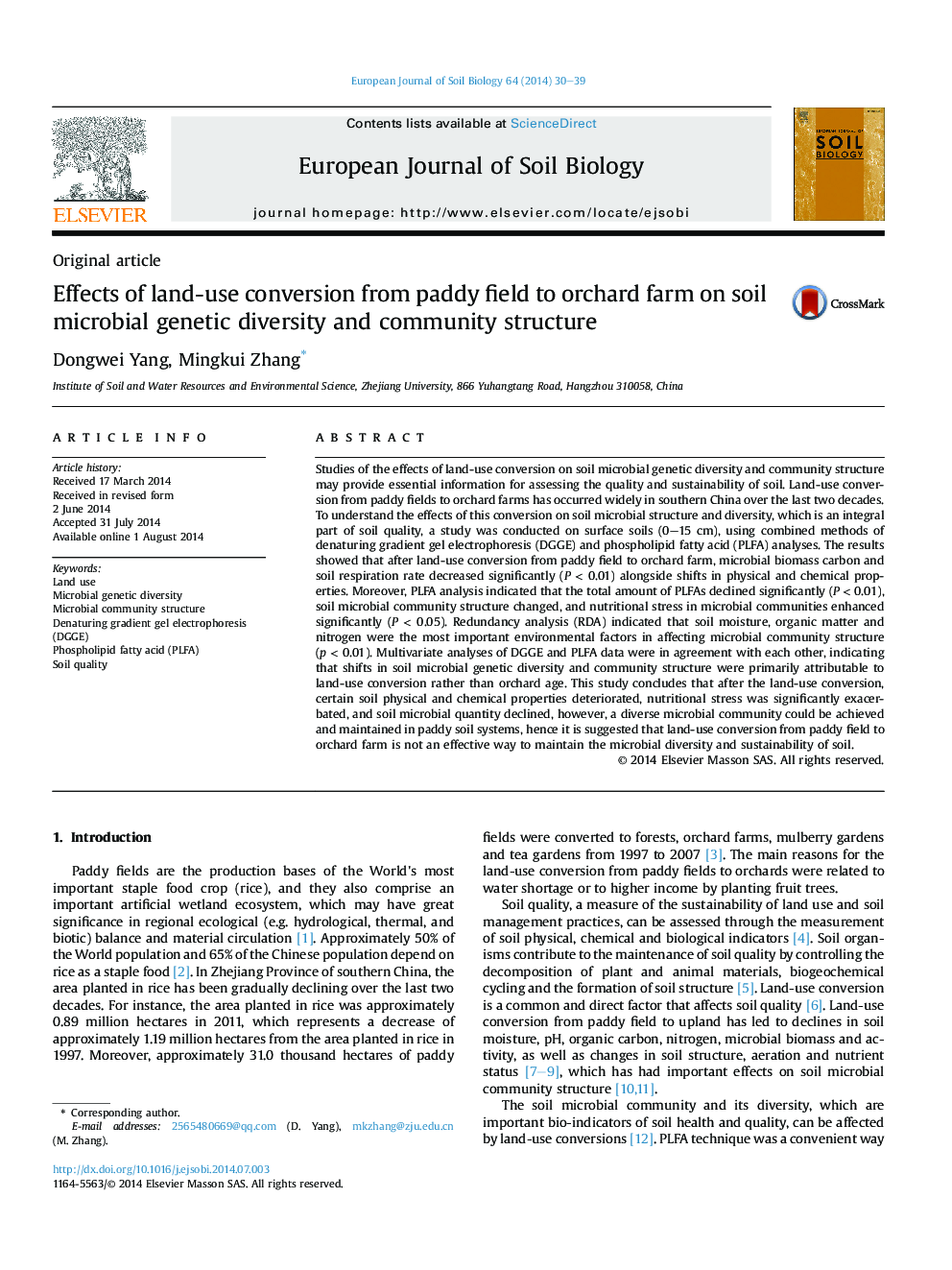| Article ID | Journal | Published Year | Pages | File Type |
|---|---|---|---|---|
| 4391797 | European Journal of Soil Biology | 2014 | 10 Pages |
•A chronosequence of soils with different converted years are selected.•We find the most important factors to affect the differences of soil microbial community structure.•After land-use conversion, nutritional stress in microbial communities enhanced.•Shifts of soil microbial diversity are primarily attributed to land-use conversion.•A more diverse soil microbial community is achieved and maintained in paddy soil systems.
Studies of the effects of land-use conversion on soil microbial genetic diversity and community structure may provide essential information for assessing the quality and sustainability of soil. Land-use conversion from paddy fields to orchard farms has occurred widely in southern China over the last two decades. To understand the effects of this conversion on soil microbial structure and diversity, which is an integral part of soil quality, a study was conducted on surface soils (0–15 cm), using combined methods of denaturing gradient gel electrophoresis (DGGE) and phospholipid fatty acid (PLFA) analyses. The results showed that after land-use conversion from paddy field to orchard farm, microbial biomass carbon and soil respiration rate decreased significantly (P < 0.01) alongside shifts in physical and chemical properties. Moreover, PLFA analysis indicated that the total amount of PLFAs declined significantly (P < 0.01), soil microbial community structure changed, and nutritional stress in microbial communities enhanced significantly (P < 0.05). Redundancy analysis (RDA) indicated that soil moisture, organic matter and nitrogen were the most important environmental factors in affecting microbial community structure (p < 0.01). Multivariate analyses of DGGE and PLFA data were in agreement with each other, indicating that shifts in soil microbial genetic diversity and community structure were primarily attributable to land-use conversion rather than orchard age. This study concludes that after the land-use conversion, certain soil physical and chemical properties deteriorated, nutritional stress was significantly exacerbated, and soil microbial quantity declined, however, a diverse microbial community could be achieved and maintained in paddy soil systems, hence it is suggested that land-use conversion from paddy field to orchard farm is not an effective way to maintain the microbial diversity and sustainability of soil.
